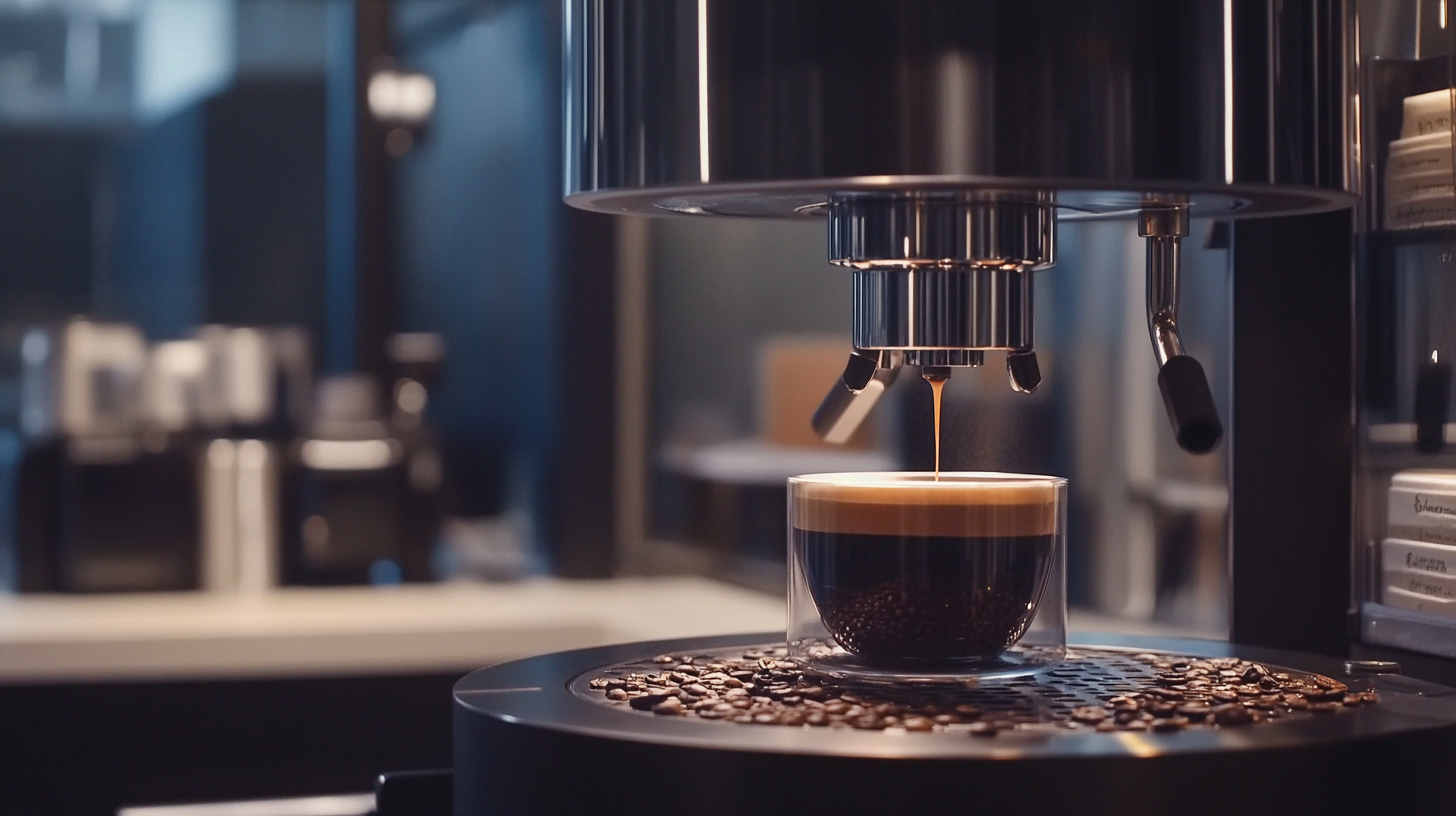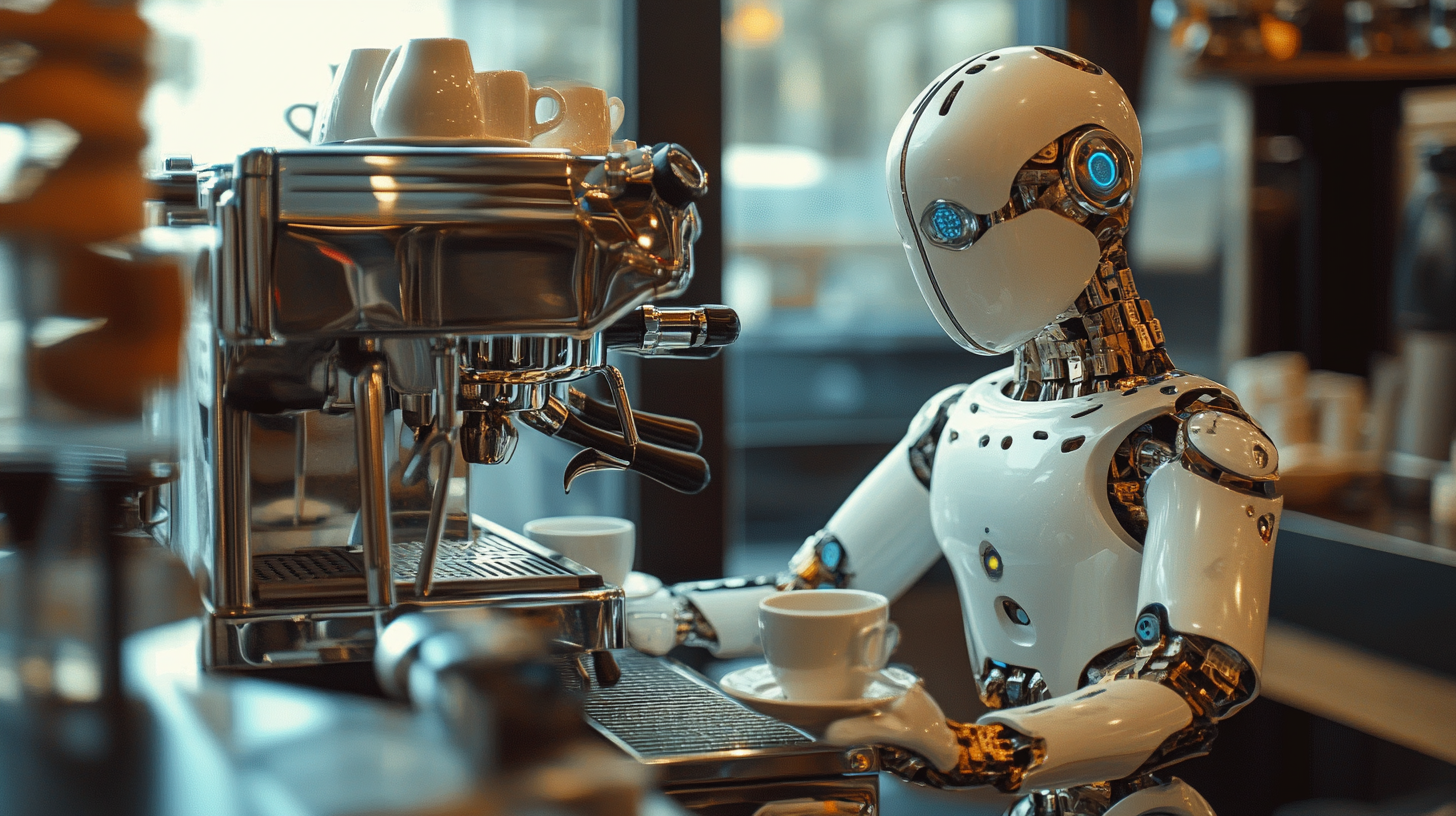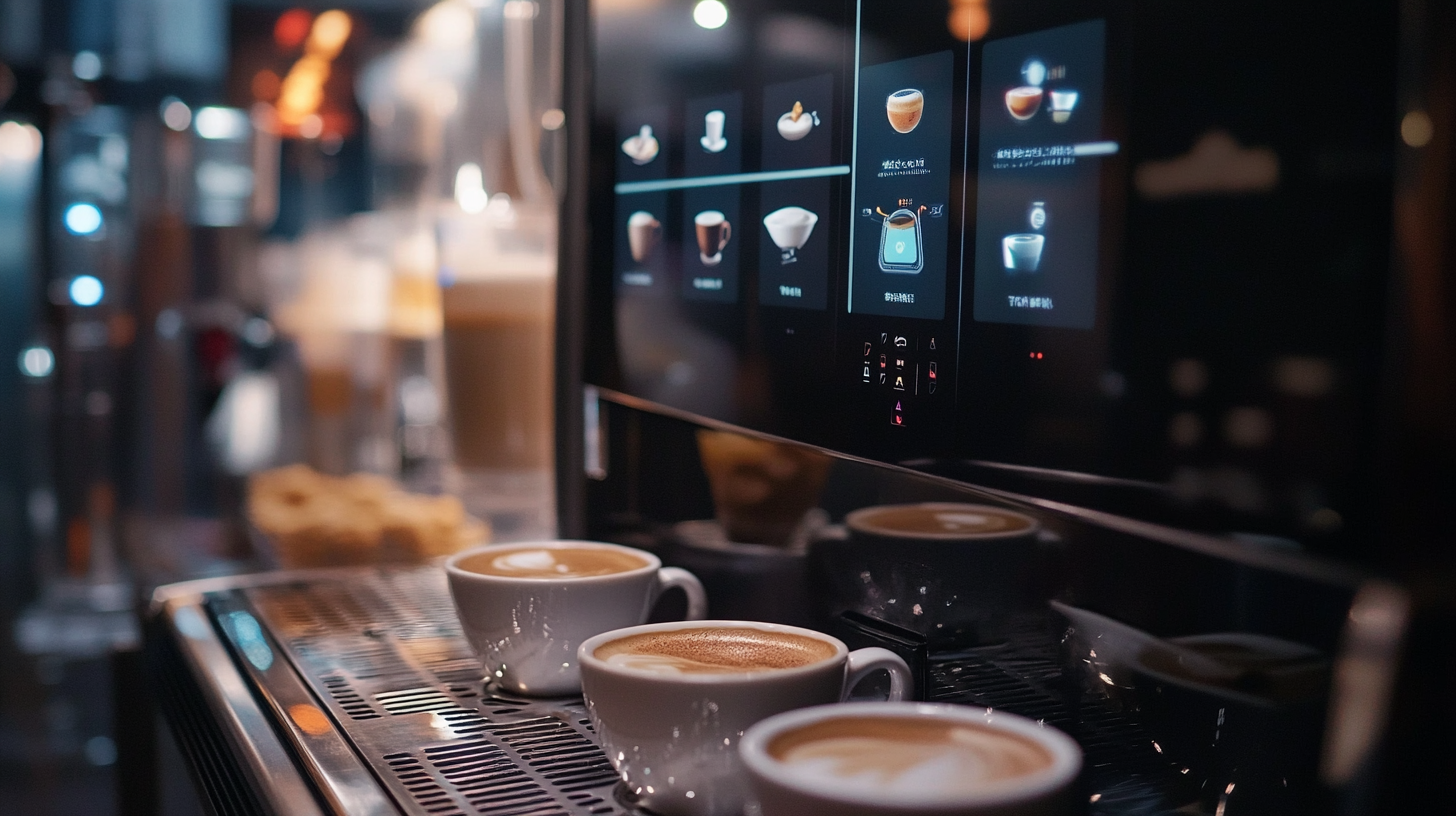Exploring the Future of Coffee Automation in 2025 Trends and Insights for Global Buyers
The coffee industry is not only about beans and brews; it is increasingly intertwining with technology, setting the stage for significant transformations by 2025. A recent report from the International Coffee Organization suggests that the global coffee market is expected to grow at a compound annual growth rate (CAGR) of 4.5% through 2025, driven by changing consumer preferences and the rise of specialty coffee. As coffee lovers become more discerning, the demand for consistent quality and innovative coffee experiences is on the rise. Enter the Coffee Robot Barista, a revolutionary solution designed to meet these demands while enhancing operational efficiency in cafes and coffee shops across the globe.
In addition to improving service speed and accuracy, the Coffee Robot Barista brings a new level of sustainability to the coffee industry. According to a report by the Specialty Coffee Association, automation technologies could reduce labor costs by up to 30%, providing an economic edge to businesses while addressing labor shortages in various regions. As we look ahead, the role of automation in coffee preparation is set to redefine the customer experience and operational practices, making it essential for global buyers to keep abreast of these trends and insights as they navigate the evolving coffee market landscape.

The Rise of Coffee Automation: Key Technologies Shaping the 2025 Market Landscape
As coffee consumption continues to surge globally, the coffee industry is embracing automation to enhance efficiency and quality. Key technologies such as artificial intelligence, robotics, and IoT are at the forefront of this transformation, shaping the market landscape of 2025. These advancements are not only streamlining production processes but also improving the consistency of flavor and the overall customer experience. Robotic baristas are becoming commonplace in coffee shops, offering precision brewing and personalized service at a pace unmatched by human workers. With the ability to learn from customer preferences, these machines are redefining the art of coffee preparation. Moreover, IoT-enabled devices are allowing for real-time monitoring of coffee roasters and brewing equipment, providing insights that help producers maintain optimal conditions for their beans. Another significant trend is the integration of data analytics in the coffee supply chain. By leveraging big data, buyers can make informed decisions regarding sourcing and inventory management, thus minimizing waste and maximizing profits. As environmental concerns grow, automation is playing a crucial role in creating sustainable practices, from reducing energy consumption to optimizing logistics. As we move toward 2025, these technological innovations will not only redefine how coffee is produced and served, but they will also transform the entire landscape of the coffee market.

Consumer Preferences for Coffee Automation: Trends Influencing Global Buyer Decisions
As the coffee industry evolves, consumer preferences increasingly lean towards automation, significantly influencing global buyer decisions. In 2025, trends suggest that buyers will prioritize fully automated coffee machines, which cater to the demand for convenience without compromising quality. The automatic coffee machine market is projected to experience substantial growth, reflecting a broader move towards premium coffee experiences that consumers desire.
Moreover, the shift towards automation should be balanced with a commitment to customer service. While automation is often perceived as a solution to operational challenges, the importance of engaging customer interactions remains crucial in specialty coffee businesses. Consumers expect not only high-quality brews but also memorable experiences during their café visits. Therefore, brands are encouraged to adopt automation that enhances efficiency while fostering personal connections with their clientele.
As coffee enthusiasts continue to seek out innovative brewing methods, the drip coffee maker market and associated segments will also adapt. The projected growth within these markets indicates that global buyers must remain agile, ready to meet evolving preferences. Understanding regional variations in taste and buying behavior will be key for businesses aiming to thrive in this competitive landscape. Adaptability and a keen sense of market trends will shape the future of coffee automation in the coming years.

Economic Impact of Coffee Automation: Cost Savings and ROI for Cafes and Roasters
The coffee industry is undergoing a transformative shift as automation technology advances and shapes the future of coffee preparation. By 2025, the global market for fully automatic coffee machines is projected to reach an impressive USD 7.08 billion, growing at a compound annual growth rate (CAGR) of 4.06%. This surge is largely driven by increasing demand from cafes and roasters looking to enhance efficiency while reducing operational costs. Today, the initial investment in automated coffee solutions can yield significant returns, creating a compelling case for business owners to embrace these innovations.
Automation not only streamlines production but also alters the role of baristas in cafes and coffee shops. As machines take over routine tasks, baristas can shift their focus to customer engagement and quality control, elevating the overall customer experience. This change not only enhances service speed but also fosters a deeper connection between staff and consumers. In essence, automation serves as a tool that empowers baristas rather than replacing them.
Moreover, with trends indicating a rising preference for quick-service coffee formats, such as automated drive-thrus, the implications for economic growth in this sector are profound. Startups are springing up, pioneering innovations like robotic coffee service that promise to minimize wait times and improve convenience for customers. As the industry continues to evolve, those who adapt to these changes early stand to reap the benefits of both cost savings and improved customer satisfaction in the competitive landscape of coffee services.

Sustainability in Coffee Automation: Meeting Environmental Standards and Consumer Demands
As we approach 2025, the landscape of coffee automation is poised to take significant strides toward sustainability, a trend that mirrors broader consumer demands for environmentally responsible products. Companies are increasingly recognizing that sustainability isn't just a buzzword; it's a business imperative. The recent strategic collaborations between brands illustrate a commitment to enhancing digital supply chains, focusing on the environmental impact of their operations. By integrating technology, companies can optimize processes that reduce waste and streamline resource use, aligning their practices with consumers' values.
The emergence of new coffee innovation hubs further emphasizes the commitment to sustainability within the industry. These facilities are not only about producing high-quality coffee but also about pioneering green practices that cater to an environmentally conscious consumer base. As brands venture into new markets, the insights gained from initiatives focusing on sustainable sourcing and production will be vital. Companies are investing in traceable supply chains, which not only enhance product quality but also ensure that environmental standards are met, responding to the growing consumer expectation for transparency in sourcing.
Ultimately, the future of coffee automation hinges on the ability of brands to innovate sustainably. Emphasizing eco-friendly procedures will allow them to appeal to a modern demographic that prioritizes not only taste but also ethical considerations. As we continue to navigate this evolving landscape, it’s clear that sustainability in coffee automation will shape market strategies and consumer preferences in profound ways.
Future Challenges in Coffee Automation: Navigating Supply Chain and Labor Dynamics in 2025
As the coffee industry heads towards 2025, the automation landscape is set to evolve dramatically, influenced by significant challenges in supply chain management and labor dynamics. According to a report by MarketsandMarkets, the global coffee market is projected to reach $102.02 billion by 2025, prompting the need for streamlined operations and enhanced productivity through automation. This growth emphasizes the importance of integrating advanced technologies into the coffee production process, enabling businesses to meet rising demand while maintaining quality and sustainability.
However, navigating the complexities of supply chain logistics remains a critical hurdle. The implementation of automation technologies, such as AI-driven inventory management and robotics in processing, can optimize efficiency but may also exacerbate existing labor shortages. The International Coffee Organization's data shows that many coffee-producing regions are facing a decline in workforce availability due to urban migration and changing employment priorities. Companies must strike a balance between employing automated solutions and addressing the human resource challenges that accompany these advancements.
Furthermore, as consumer preferences shift towards ethically sourced and sustainable products, brands must adapt their automation strategies to include transparency and traceability in their supply chains. Research from the Specialty Coffee Association indicates that 60% of consumers are willing to pay more for sustainable coffee, reinforcing the need for automated systems that provide detailed insights into sourcing practices. Ultimately, coffee producers will have to innovate continuously, leveraging automation to enhance their operational capabilities while being mindful of the evolving economic landscape and social dynamics impacting the workforce.
